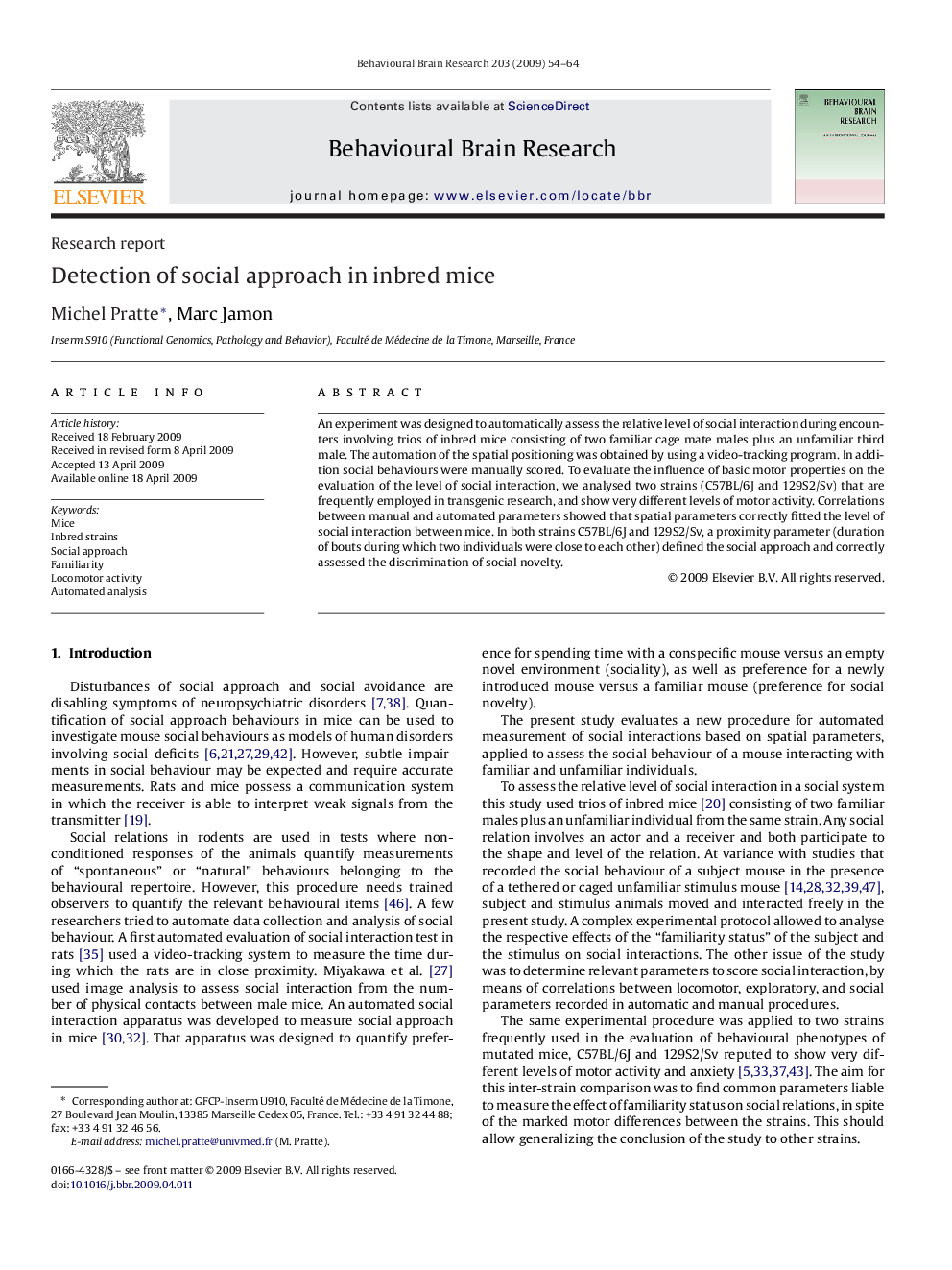| Article ID | Journal | Published Year | Pages | File Type |
|---|---|---|---|---|
| 4314447 | Behavioural Brain Research | 2009 | 11 Pages |
An experiment was designed to automatically assess the relative level of social interaction during encounters involving trios of inbred mice consisting of two familiar cage mate males plus an unfamiliar third male. The automation of the spatial positioning was obtained by using a video-tracking program. In addition social behaviours were manually scored. To evaluate the influence of basic motor properties on the evaluation of the level of social interaction, we analysed two strains (C57BL/6J and 129S2/Sv) that are frequently employed in transgenic research, and show very different levels of motor activity. Correlations between manual and automated parameters showed that spatial parameters correctly fitted the level of social interaction between mice. In both strains C57BL/6J and 129S2/Sv, a proximity parameter (duration of bouts during which two individuals were close to each other) defined the social approach and correctly assessed the discrimination of social novelty.
